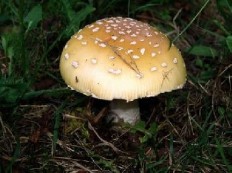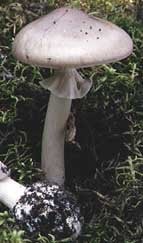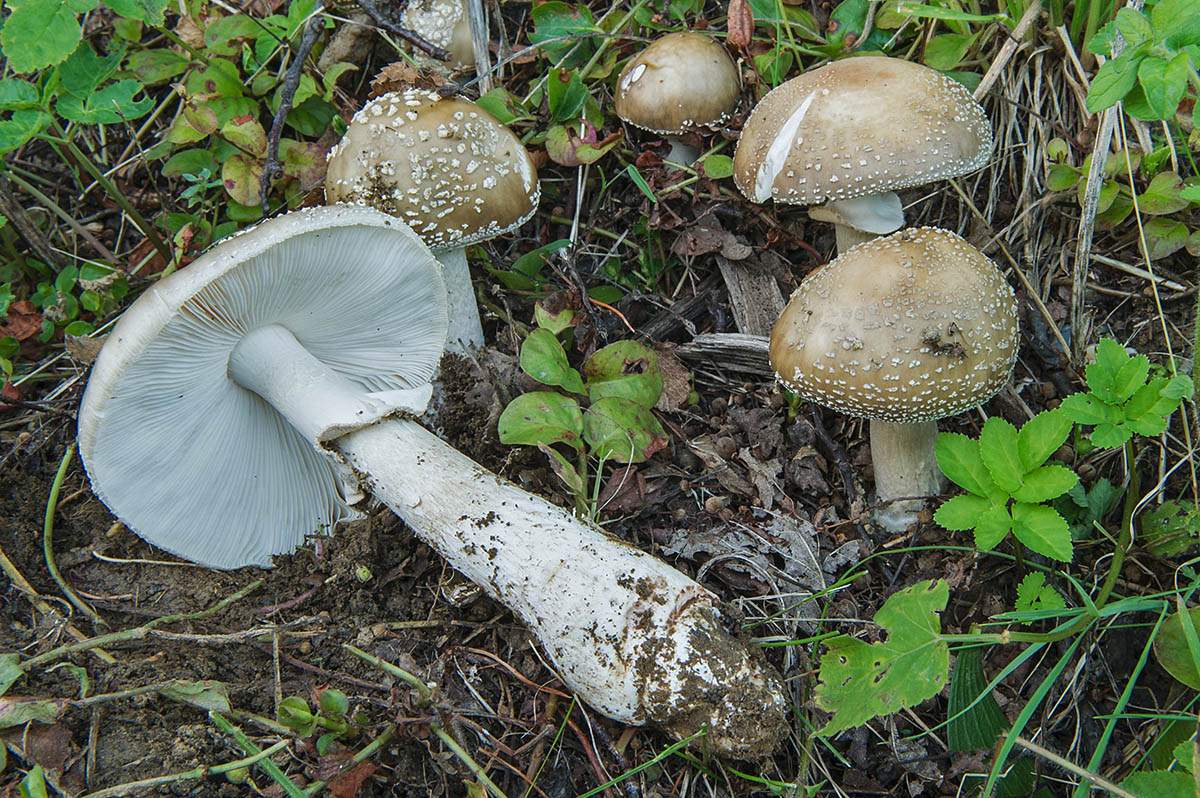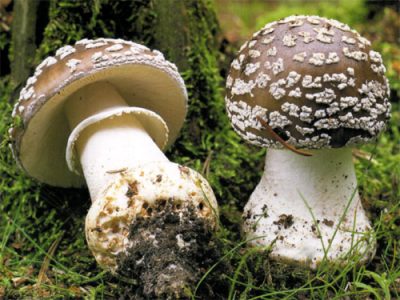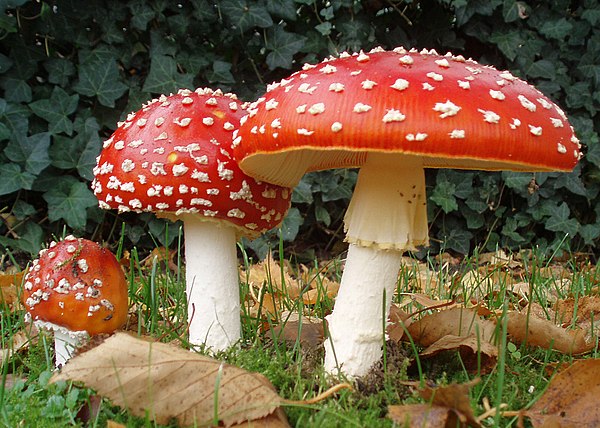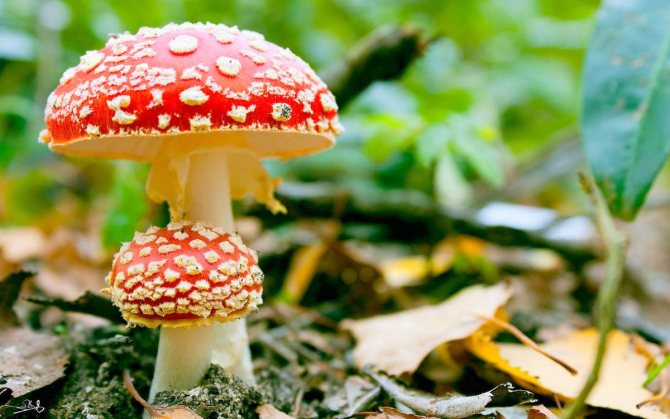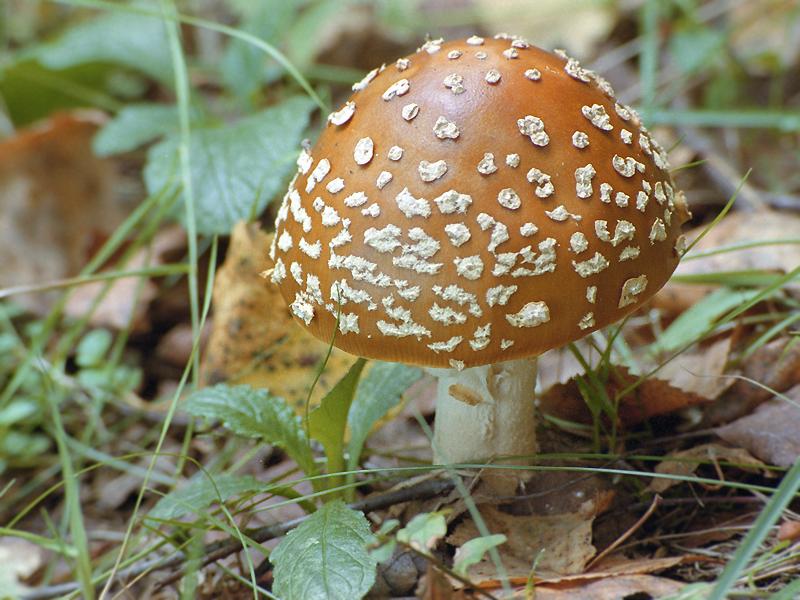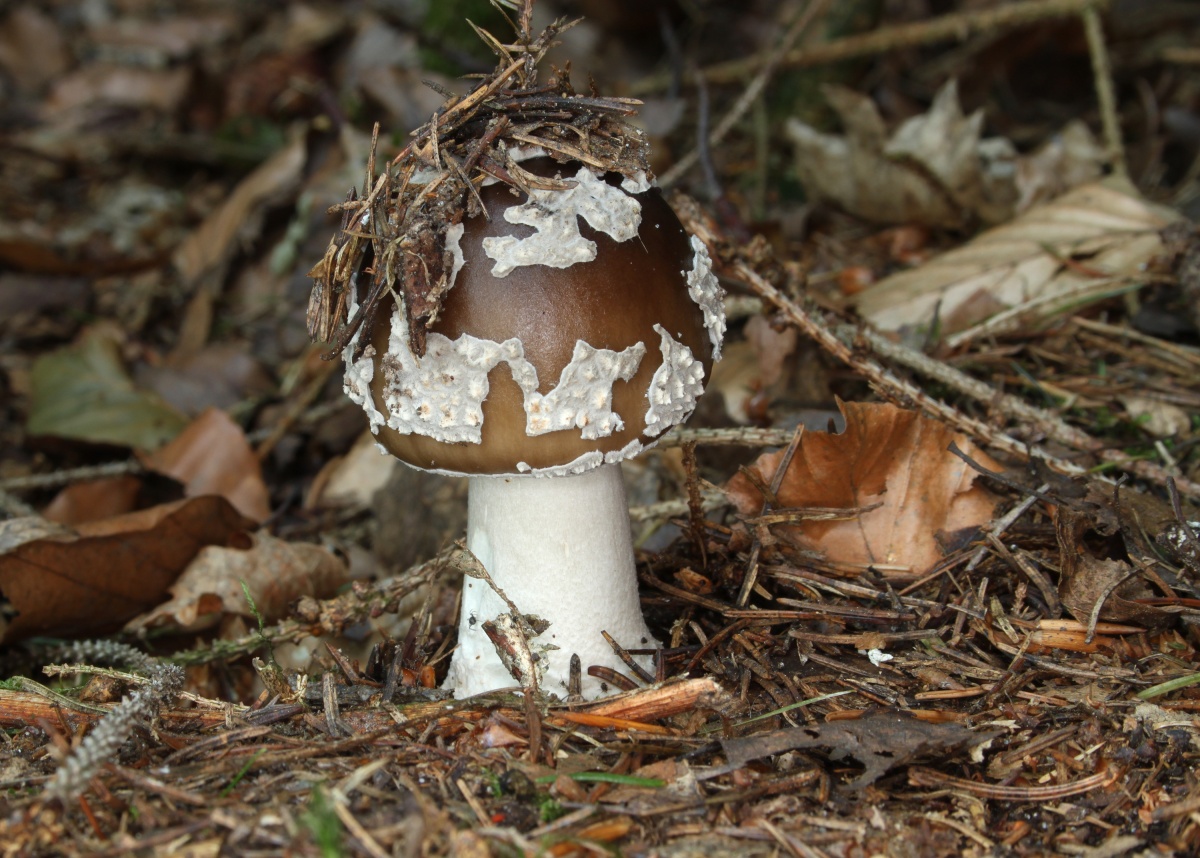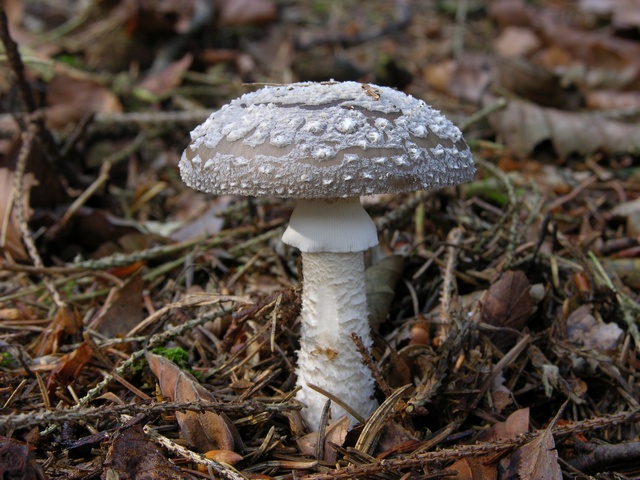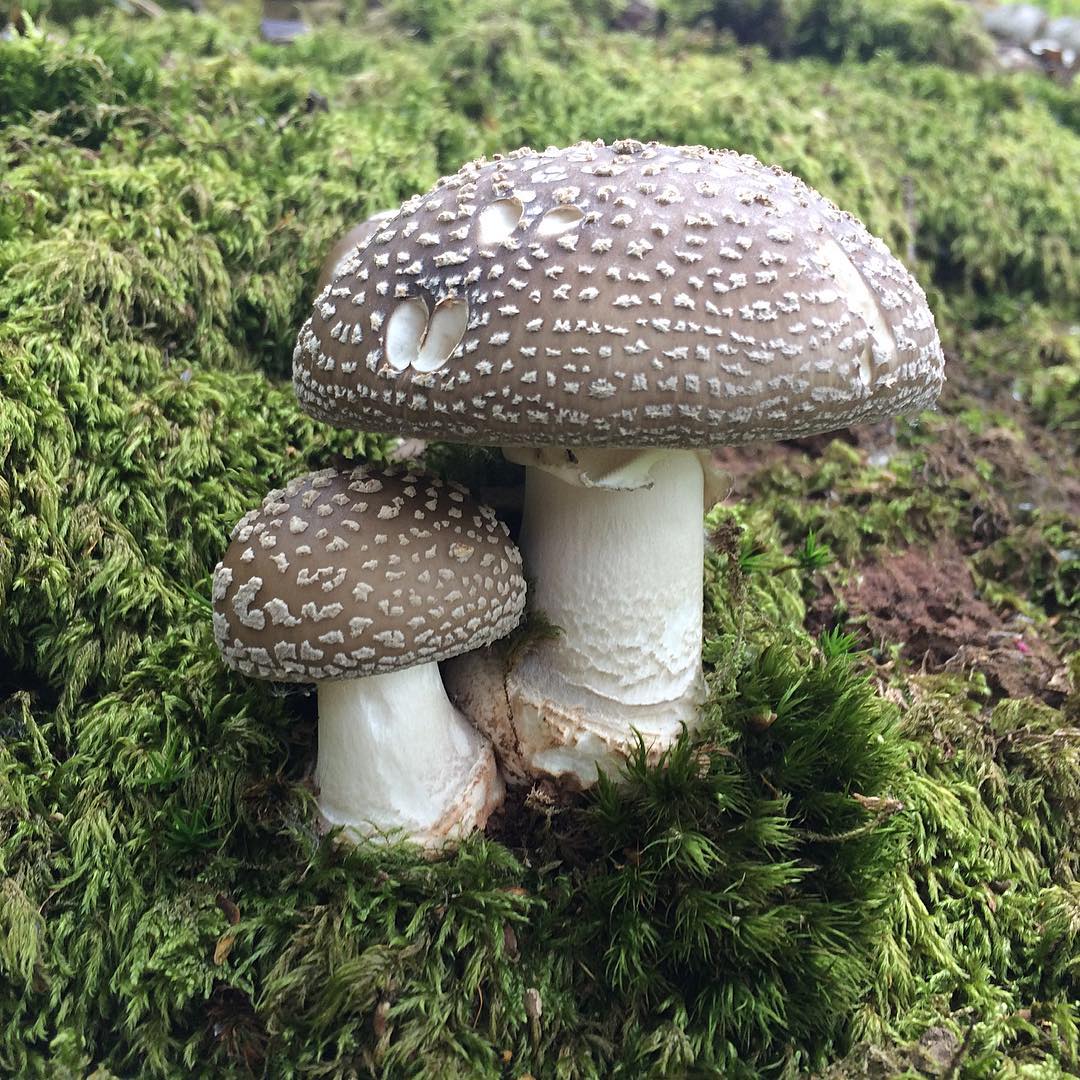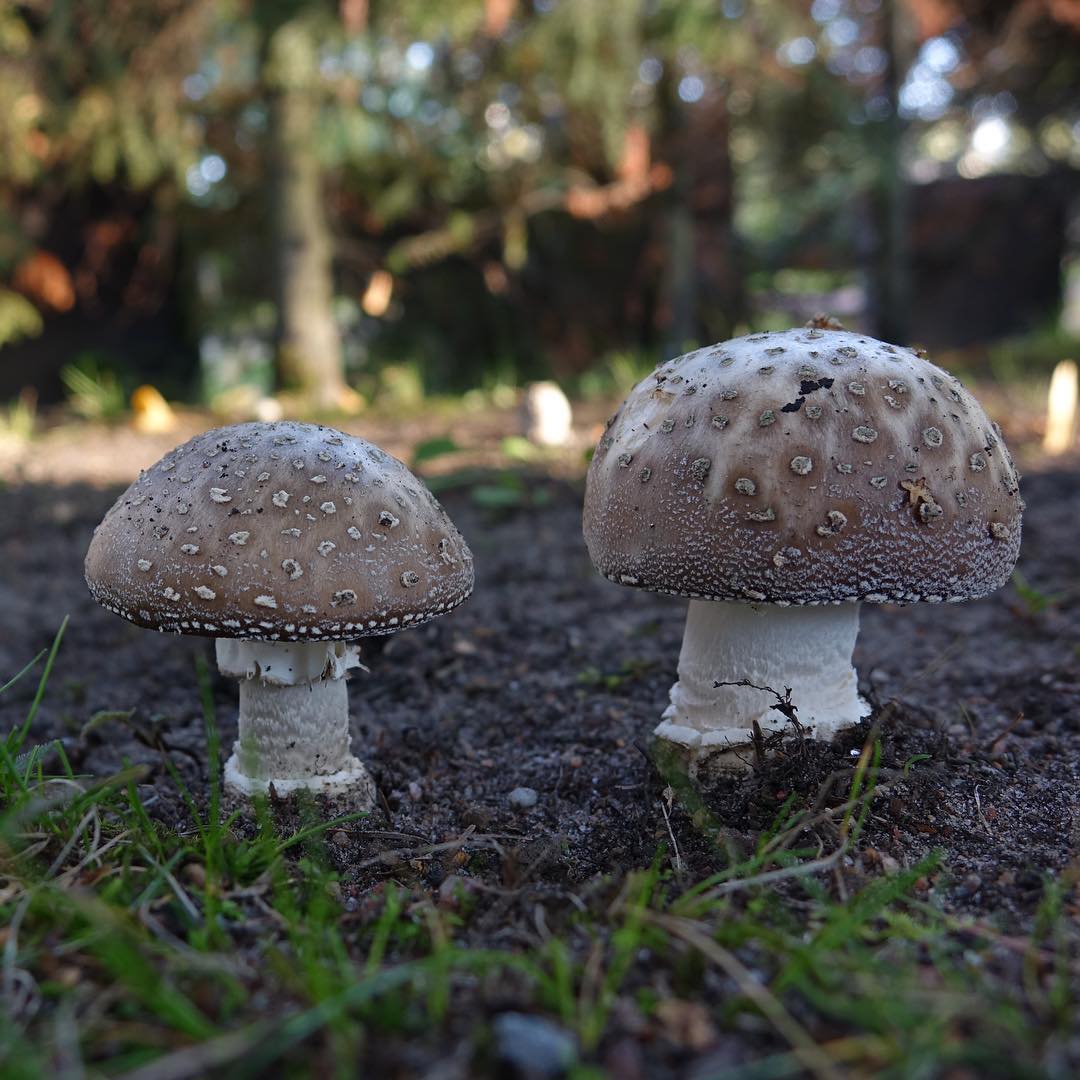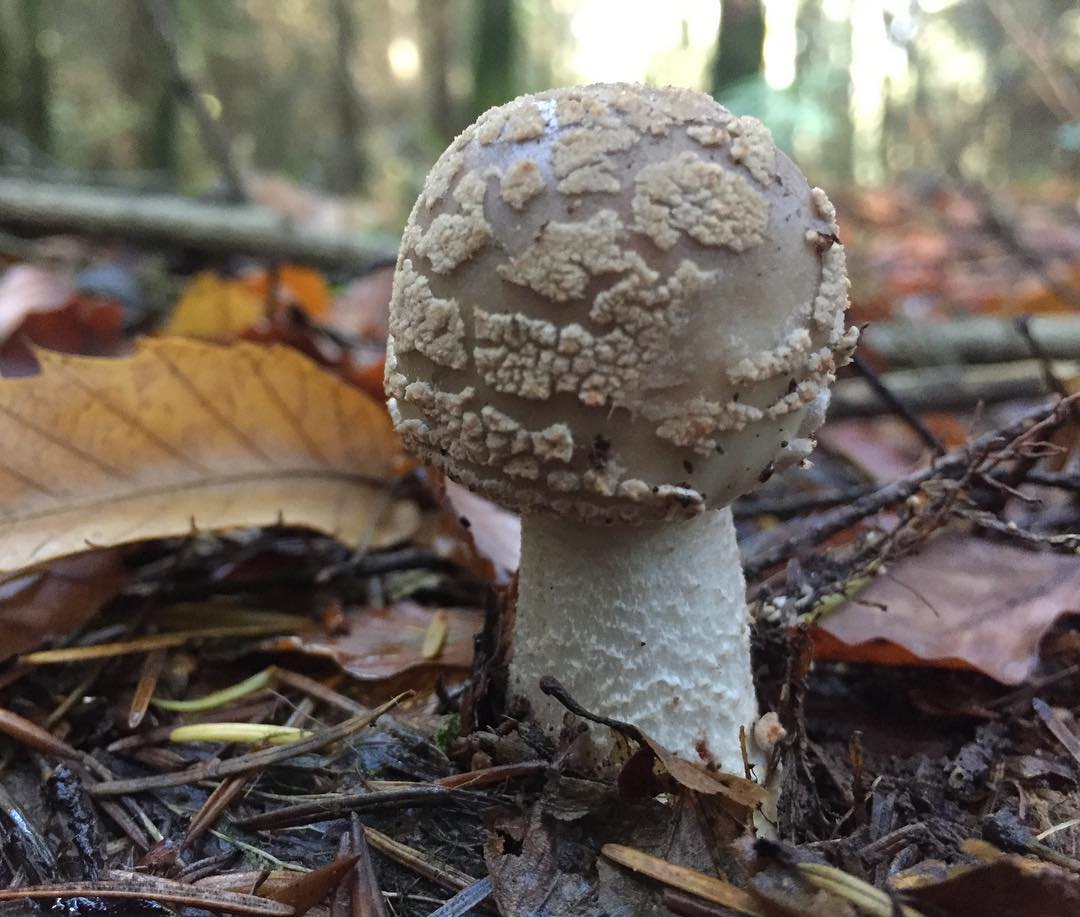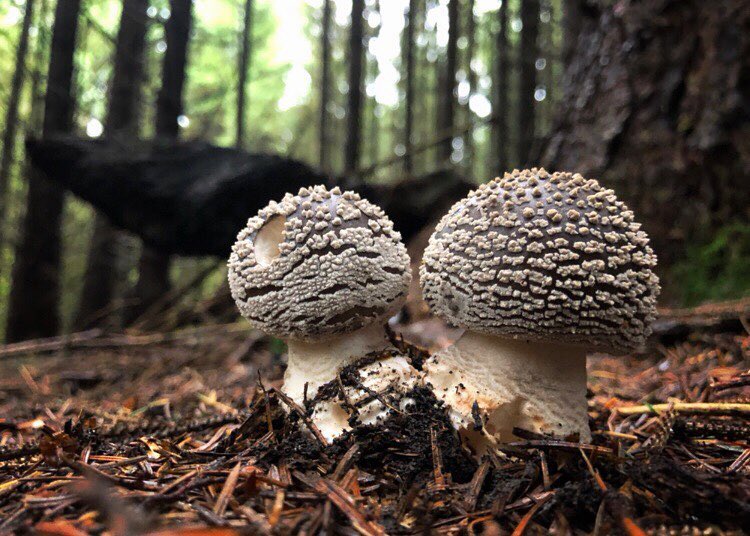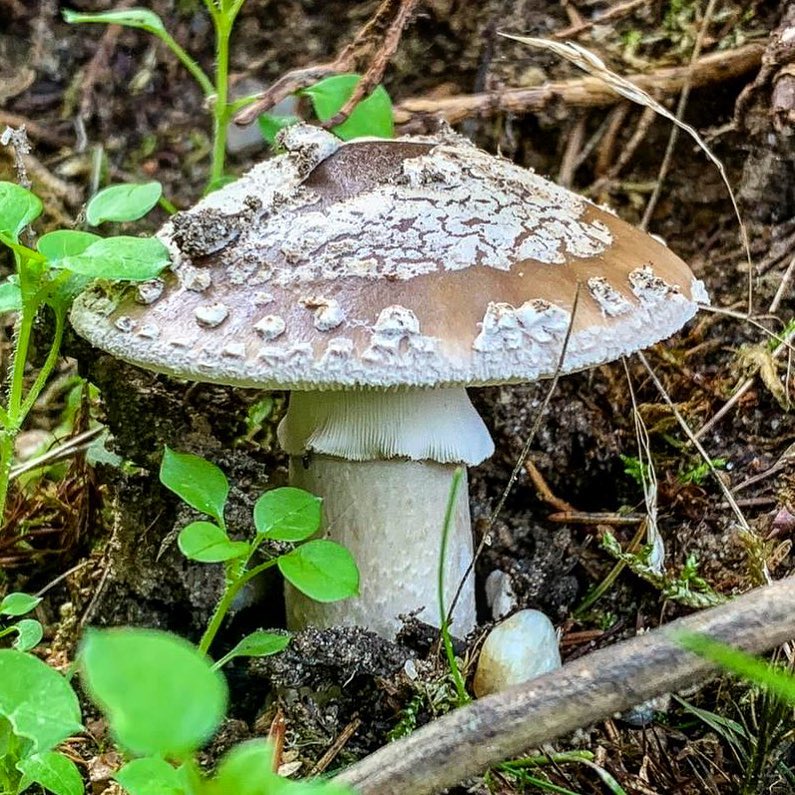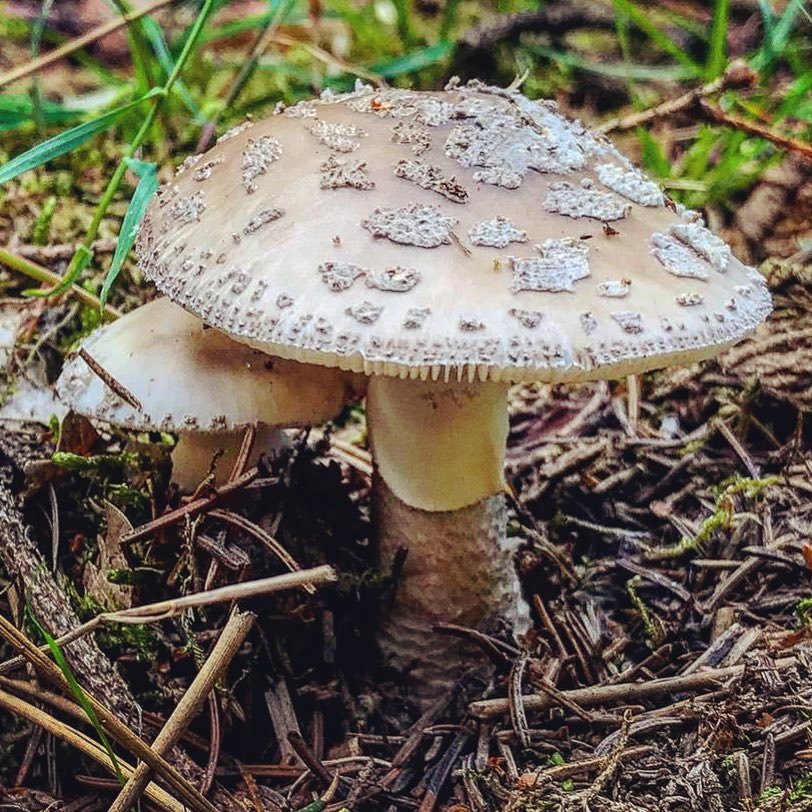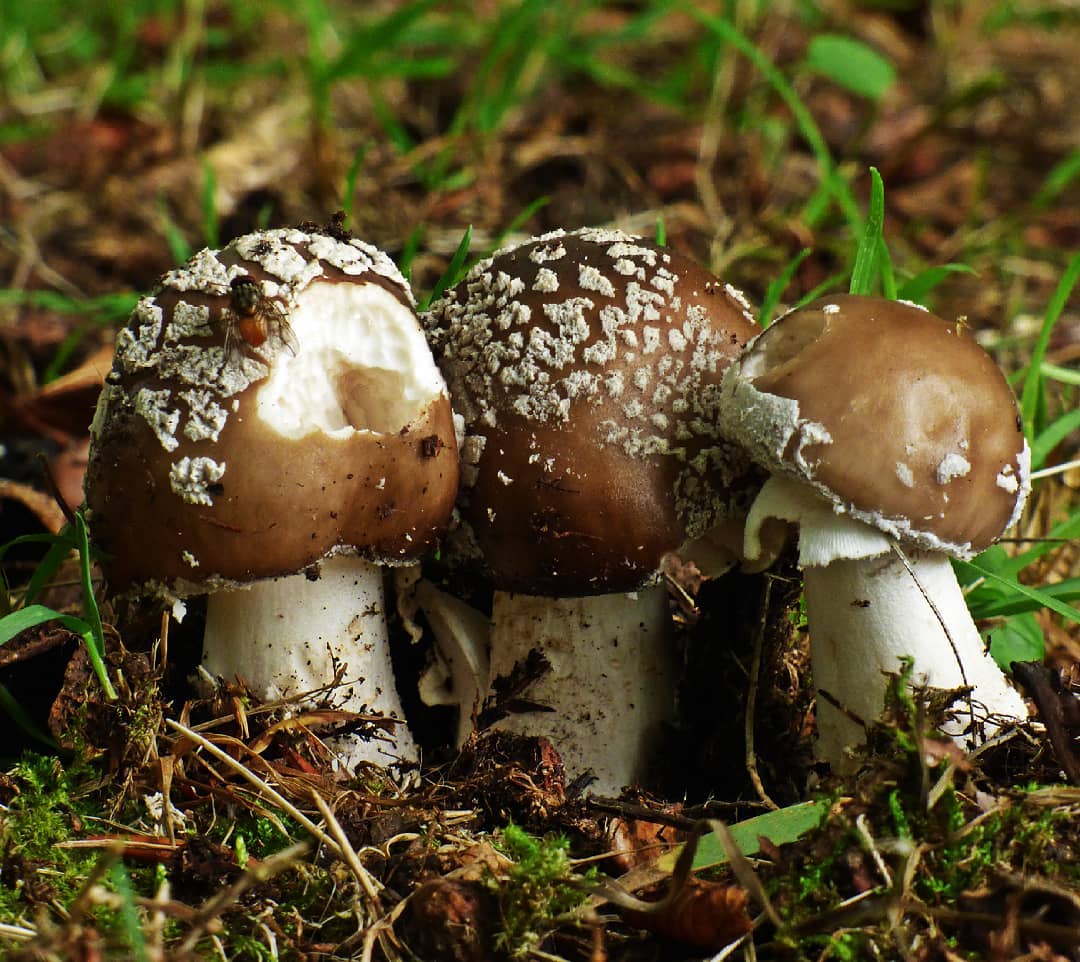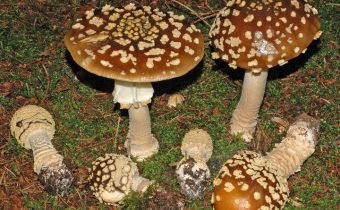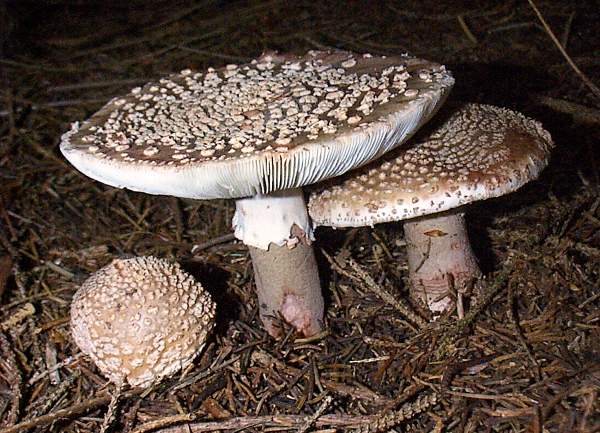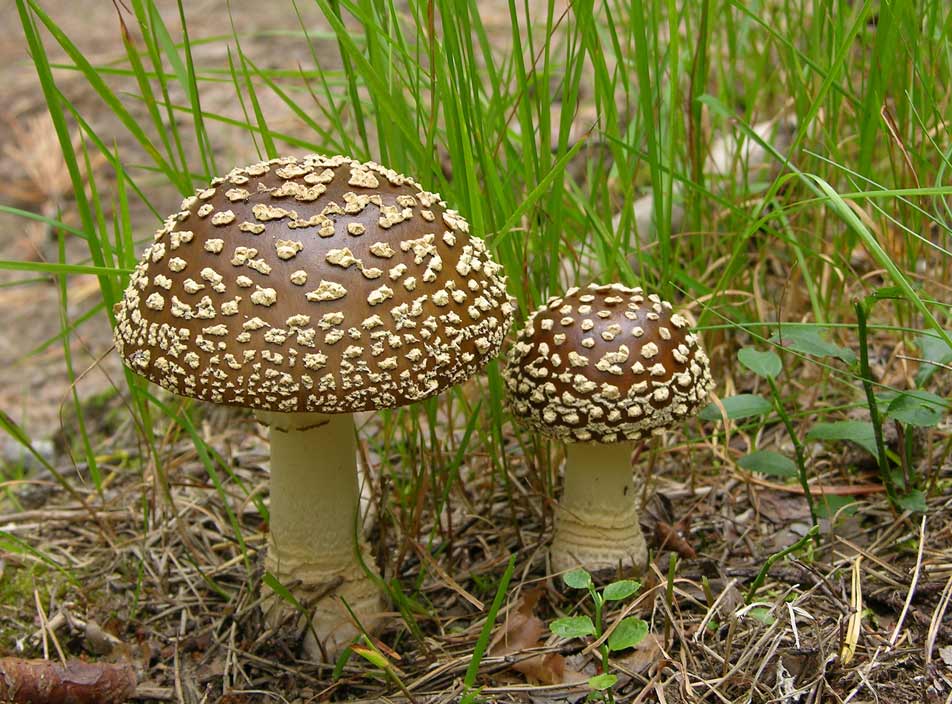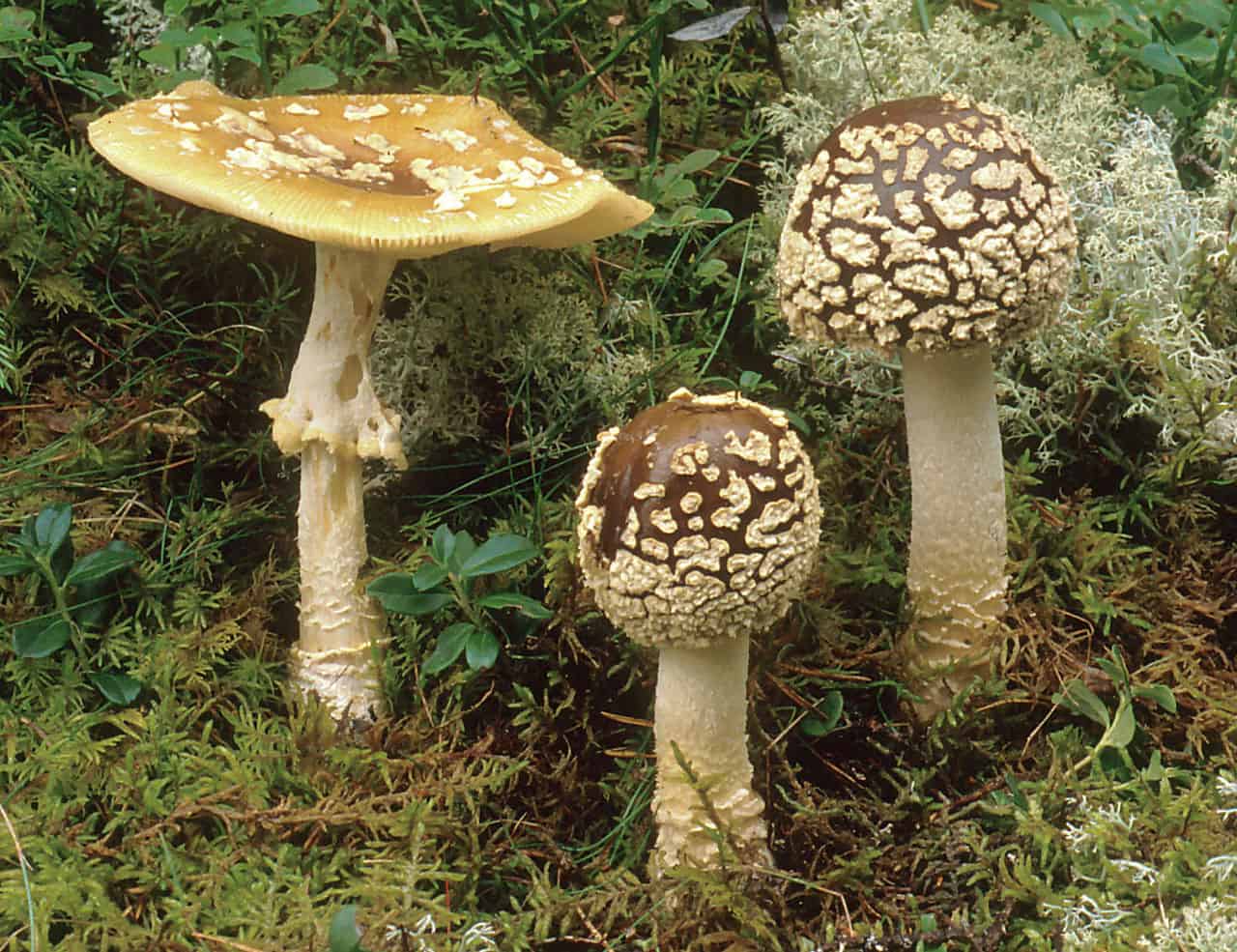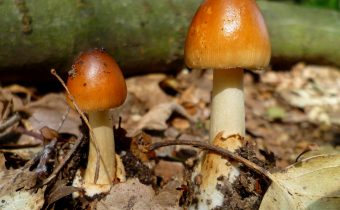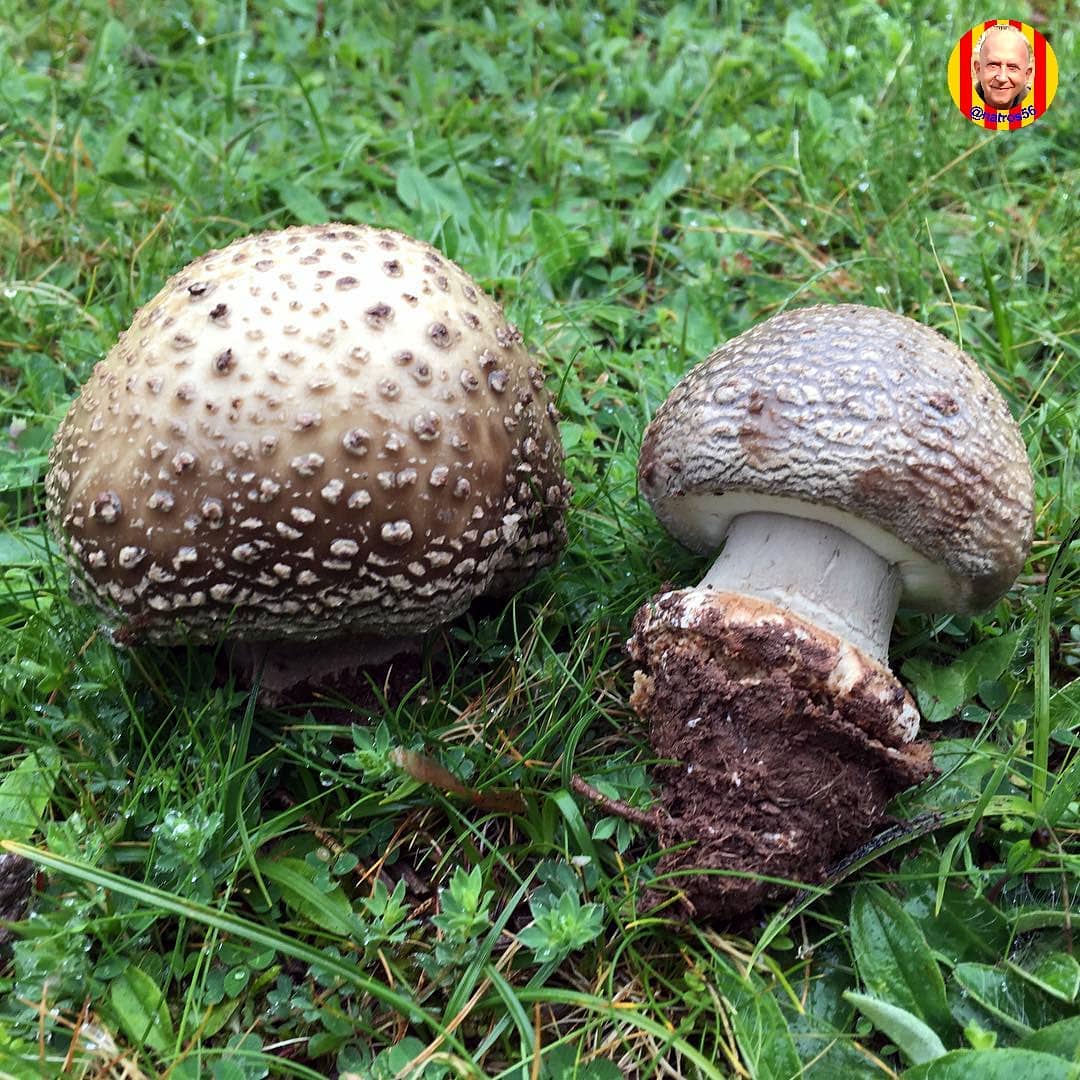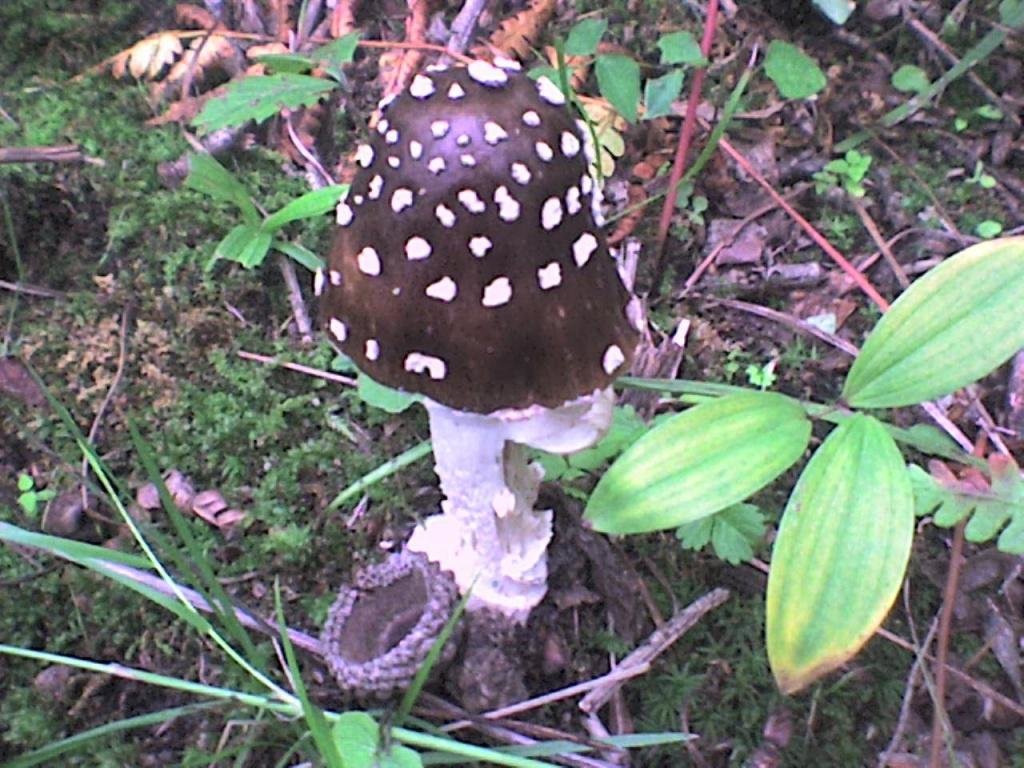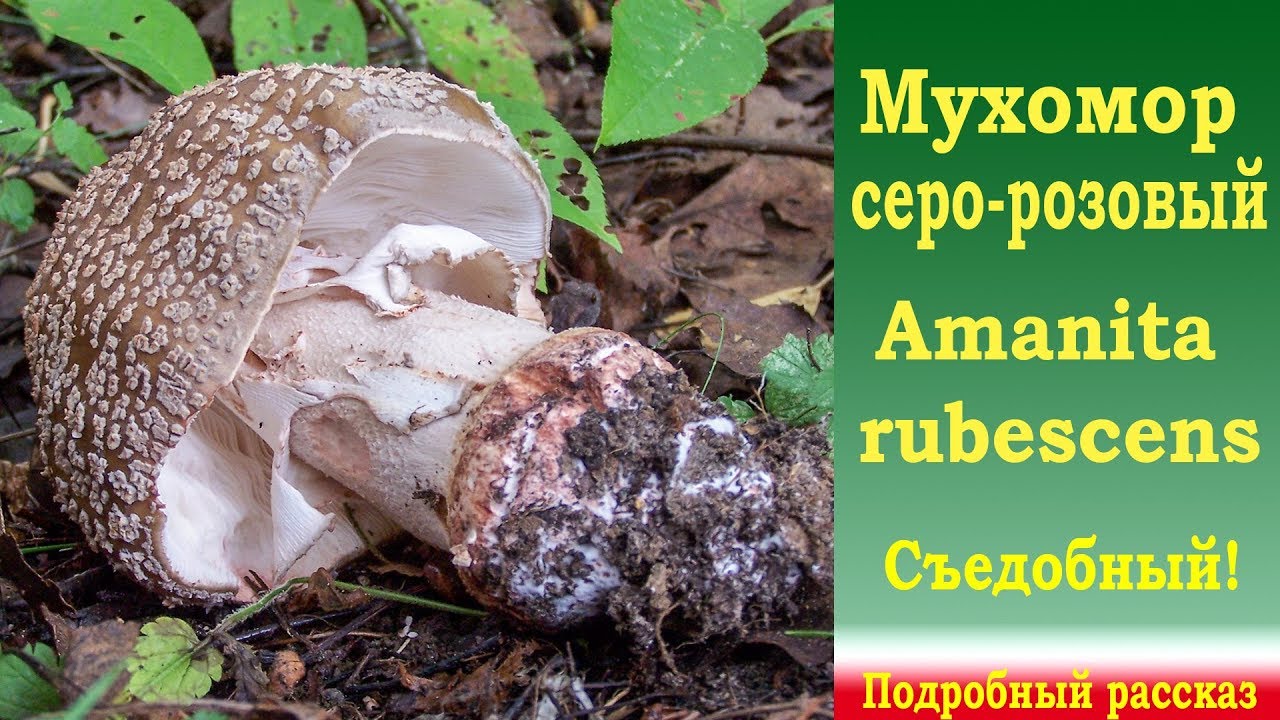Help with poisoning
So, consider a situation in which you or another person still confused some kind of mushroom and ate the royal fly agaric. How to proceed in this case.
So, if the fly agaric was used, and you found out about it in advance, even before the moment when nausea, hallucinations and indigestion appeared, it is necessary to induce vomiting. The easiest way is to “put two fingers in your mouth” and bend over the toilet. If there is an opportunity to help yourself with other methods, be sure to do it.
If vomiting has passed, be sure to eat a sorbent, for example, such as Polysorb. It will also be great to use prebiotics, for example Linex.
If the first signs of poisoning and hallucinations appear, or you simply could not induce vomiting, in this case, you need to urgently call an ambulance. Doctors try to help on the spot or take the victim to the hospital. Without careful medical care, it is very difficult to get out of this state, and not get the consequences.
As a rule, the patient's stomach is washed, and droppers are also given with saline and special drugs that should raise immunity, which means the body's resistance to toxic substances in the composition of the royal fly agaric.
The patient should remain under the supervision of doctors for a period from 2 days to one week, depending on the severity of his condition.
During the time that a person will pass into himself, he needs to very carefully choose food, since the body has suffered consequences after eating a poisonous mushroom. It is allowed to drink broths, eat steamed fish and some types of cereals.
Home treatment can be dangerous.
If a child is poisoned by mushrooms, do not try to induce vomiting, but urgently pack up and go to the nearest hospital.
False doubles
| View | Morphology | Habitat | The main danger |
Amanita regalis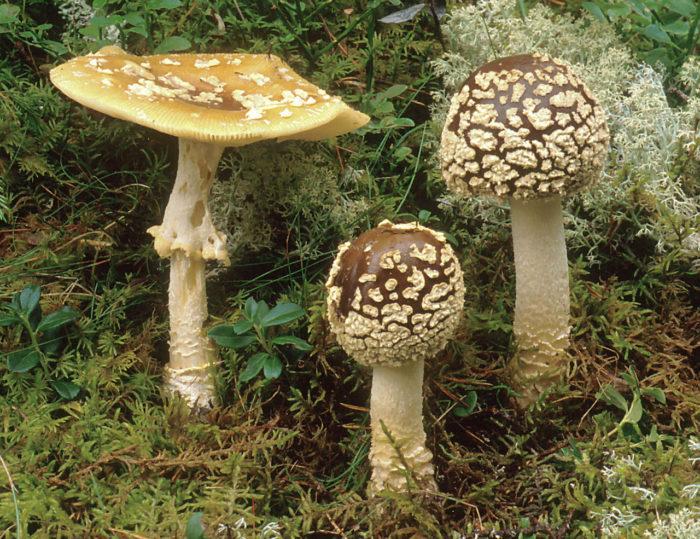 |
The cap is from 7 to 16 cm, spherical in young mushrooms and almost flat in adults. The color is dark brown, olive-red, sometimes gray-yellow. The stem is slender, no more than 20 cm in length, with noticeable globular thickenings at the bottom. The pulp of the mushroom is yellowish-white, does not have a specific smell. | Prefers moist coniferous forests of the European part of Russia. Representatives have also been found in Korea and Alaska. | It is a poisonous and highly toxic representative of the kingdom due to the content of muscimol, which causes damage to the nerve endings. |
Fly agaric, chunky fly agaric (Amanita excelsa)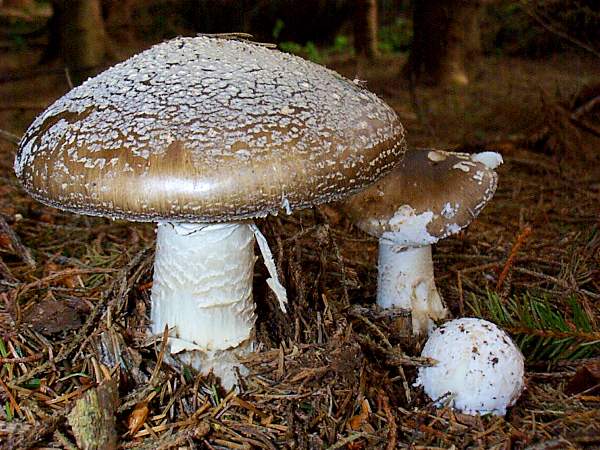 |
The cap does not exceed a diameter of 12 cm, brown, silvery-brown with light gray remnants of the bedspread. The pulp has a faint turnip smell. | Drought tolerant and ubiquitous | The mushroom is considered conditionally edible, however, due to its similarity with other representatives of fly agarics, which are very poisonous, the collection and use of this species is not recommended. |
Leopard or gray mushroom (Amanita pantherina) |
In appearance, it is almost identical to Amanita rubescens | Found in all types of forests in the Northern Hemisphere | Despite the fact that this mushroom is included in the Red Book of Russia, it is dangerous. It contains muscarine, muscaridin, hyoscyamine. Due to this composition, the panther fly agaric is extremely toxic. Poisoning can be fatal. |
Amanita phalloides |
The cap rarely reaches 15 cm, mostly 10 cm. It has a silky skin, greenish-olive color. The cap, as the fungus ages, acquires a flat-convex, outstretched shape. The stem is thin and does not exceed 20 cm, with greenish veins and expansion in the lower part. | The pale grebe prefers moist forests. It is difficult to find it in arid regions. It is not whimsical to the type of soil and feels best in deciduous forests (it grows extremely rarely in conifers). | Extremely dangerous.The body and the leg contain a huge amount of phalloidin, which is a heavy toxin that affects the parenchymal organs. |
Below are photographs in which you can see that, despite the obvious similarity, the twins still have a number of differences from the pearl fly agaric.
Difference from the poisonous fly agaric panther
Distinguishing these two members of the genus from each other is not so difficult. Despite the almost identical appearance, the panther fly agaric never changes the color of the pulp when damaged (gray-pink always turns red).
Is the red fly agaric dangerous?
Muscarine, a very potent poison, is part of the chemical composition of the red fly agaric. The slightest dose of this substance used by a person can cause terribly serious consequences, death is not excluded. Muscarine is an alkaloid. All alkaloids can be used as a stimulant. The dose should be small to avoid toxicity.
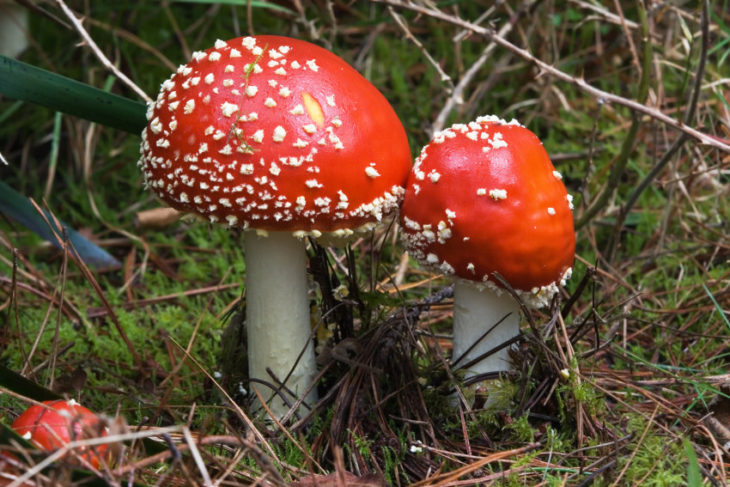
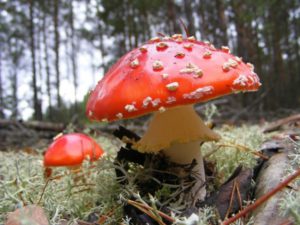



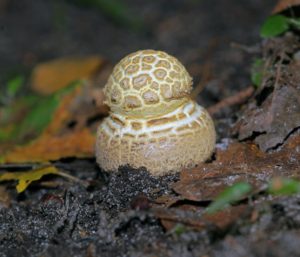
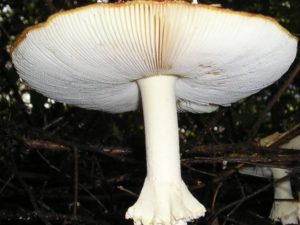
A complex of three active substances acts on the brain, we will not delve into chemical terms. The poisonous protein substances of the fly agaric are death for flies, which is why the mushroom received such an original name. Even the smallest doses kill these insects.

Where and how does the white fly agaric grow
The usual habitat of these mushrooms is forests, conifers and mixed. Amanita loves moist soil, it is often found on the slopes of ravines, in lowlands, along rivers and swamps. It can grow as single specimens and in whole groups.
The season of the white fly agaric is from late May to July, however, if the summer is rich in rains, then to August. These mushrooms usually disappear by September.
Interestingly, the spores of the white amanita are also poisonous, so it is prohibited to collect any gifts from the forest nearby with the mushroom. Also, you cannot take it in your hands, since the plaque that covers the mushroom can then get on other mushrooms and spoil them. If the fly agaric gets into the basket, unfortunately, the entire crop will have to be thrown away so as not to risk getting poisoned.
Useful information about the world of mushrooms
We all love to visit forests, just for a walk, or in search of something tasty and beautiful. Avid mushroom pickers know about all the intricacies of this species, but ordinary inexperienced people may not get exactly what they were looking for.

There are many forests in Europe, more than 80 species have found their refuge in the forests, which harm the human body when they are eaten. Even touching the mushroom with your hands, the poison from your hands can get into your mouth. About 30 species of these mushrooms are dangerous, many of them are deadly poisonous, the red fly agaric falls into this number. Beware of mushrooms if you are not familiar with them.
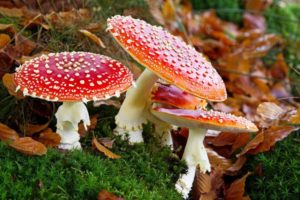
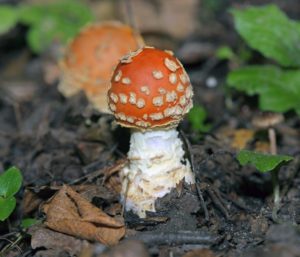

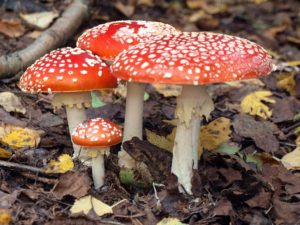
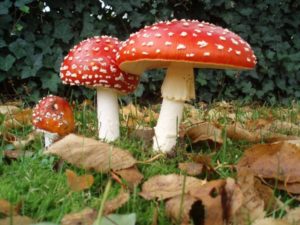

- What should we know first of all about his appearance, so as not to confuse him with anything? Brief description, has a cap on a leg, fruiting, dense, fleshy body.

The mushroom cap does not exceed 20 cm in diameter, it is also fleshy, at the beginning of growth it acquires a spherical shape, after a while it is convex-outstretched, thin ribbed edge, sticky orange-red. When it starts to age it becomes yellowish and the colors fade.
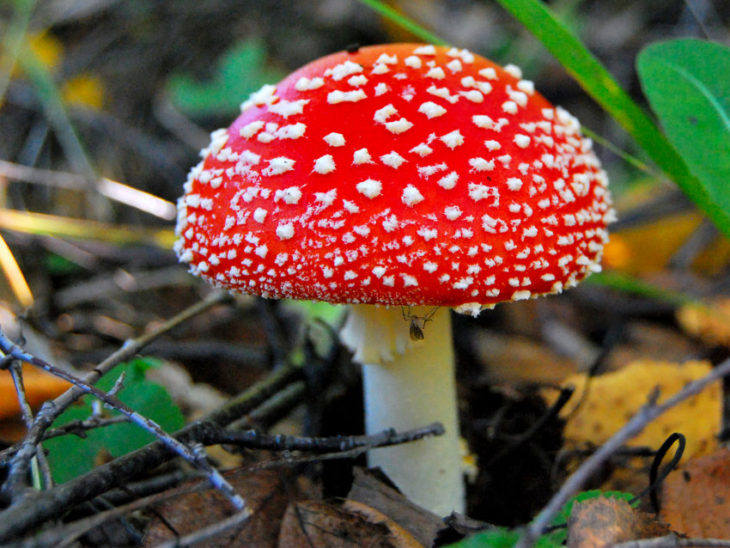
On the cap there are large white spots, dots - mushrooms are found without them, but very rarely. Under the skin, the cap is light orange, surprisingly tasty, the mushroom is sweet in taste and exudes a pleasant aroma. In all books and booklets, fly agarics are very vividly depicted, it is difficult to confuse them with something else.

Many different types prevail in our area
It is important to know that absolutely all fly agarics are poisonous.
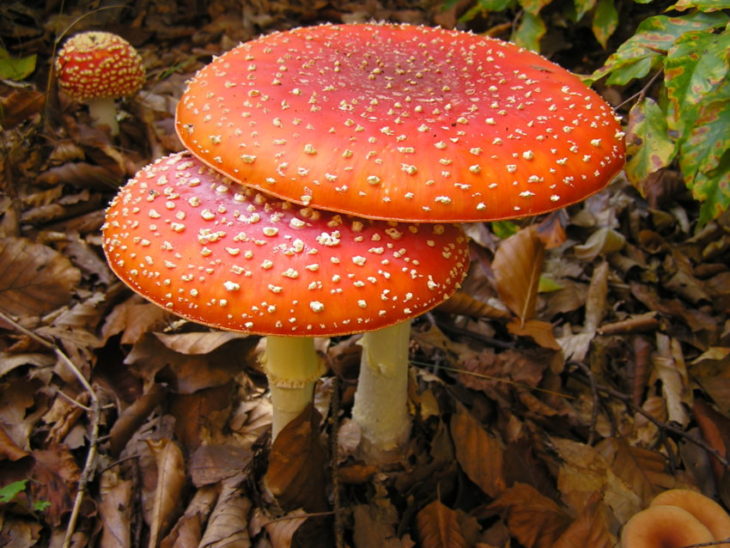
Morphology
Fruiting bodies are mainly large, with a central stalk, at the beginning of development, completely enclosed in a common veil. The type of development is bivelangiocarpous or pileocarpous.
The cap is thick-fleshed, sometimes thinner, possibly with a tubercle, easily detached from the stem. The skin is of various shades of white, red and green, usually covered with various rags or flakes left over from the common bedspread. The edge of the cap is smooth or finely fleshy, ribbed.
loose or slightly adherent, white or slightly yellowish. There are plates, often of different lengths.
The stem is cylindrical, usually straight, often widened at the base.
The pulp is white, in some species it is colored at the cut, with or without smell.
The remains of the bedspreads. Volvo can be loose or adherent to the base of the leg, sometimes it looks like well-visible rings. The remnants of the common bedspread on the cap are usually easily detached, in some species adhering to the skin. After tearing, the private veil remains on the pedicle in the form of a ring, smooth or uneven and torn. In some species (subgenus Float), the ring is absent, but more or less large scales remain on the stem - the remains of a private veil.
Spore powder is white or slightly pinkish.
Spores are colorless, round to ellipsoidal or cylindrical, smooth, binuclear, and contain fluorescent droplets. In species with a smooth edge of the cap, the spores are amyloid, in species with a ribbed edge, they are non-amyloid.
Pleuro- and cheilocystids are usually absent; some species have cheilocystids.
Taxonomy and types
Main article: Taxa of the genus Amanita
Genus Amanita are divided into a number of smaller taxa, there are different taxonomy schemes, the systems of E. Gilbert (1918 and 1940), Corner and Bas (1969), Jenkins (1977 and 1986), Garsena (1984) are known. One of the most recognized is the system of R. Singer (1986):
- Subgenus Amanita
- Section Amanita
- Section Caesaria Sing., 1949
- Subgenus Lepidella (E.-J. Gilbert) Veselý emend. Corner & Bas, 1962
- Section Amidella (E.-J. Gilbert) Konrad & Maubl., 1948
- Section Phalloideae (Fr.) Quel., 1872
- Section Validae (Fr.) Quel., 1872
- Section Lepidella (E.-J. Gilbert) Bas, 1969
- Subsection Vittadiniae Bas
- Subsection Solitariae Bas
- Subsection Lumbatulae Bas
- Subsection Gymnopodae Bas
- Subgenus Amanitopsis Roze, 1876 nom. cons. - float
The float has an unclear position in taxonomy. Some researchers (S.P. Wasser) distinguish it as an independent genus, in some classifications this taxon is classified as a section (Vaginatae) to the subgenus Amanita.
The most famous types:
| Cat. * | Latin name | Russian name | ||||||||||
|---|---|---|---|---|---|---|---|---|---|---|---|---|
| Amanita franchetii(Amanita aspera) | Amanita muscaria | |||||||||||
| Amanita caesarea | Caesar mushroom, imperial mushroom | |||||||||||
| Amanita caesareoides | Amanita muscaria, Far Eastern caesar mushroom | |||||||||||
| Amanita ceciliae(Amanita inaurata)(Amanita strangulata) | The float is strange, fly agaric sicilian | |||||||||||
| Amanita citrina(Amanita bulbosa)(Amanita mappa) | Amanita muscaria, yellow-green fly agaric, lemon yellow fly agaric, lemon fly agaric, yellow pale toadstool | |||||||||||
| Amanita echinocephala | Amanita muscaria, amanita muscaria | |||||||||||
| Amanita eliae | Amanita muscaria | |||||||||||
| Amanita excelsa | Fly agaric | |||||||||||
| Amanita flavipes | Amanita muscaria | |||||||||||
| Amanita fulva | Float yellow-brown | |||||||||||
| Amanita gemmata(Amanita junquillea) | Fly agaric bright yellow, pearl fly agaric | |||||||||||
| Amanita muscaria | Amanita muscaria | |||||||||||
| Amanita ovoidea | Amanita muscaria | |||||||||||
| Amanita pantherina | Amanita muscaria, Amanita muscaria | |||||||||||
| Amanita phalloides | Amanita muscaria, green fly agaric, white fly agaric | |||||||||||
| Amanita porphyria | Amanita muscaria, porphyry fly agaric, purple fly agaric | |||||||||||
| Amanita regalis(Amanita muscaria var. regalis)(Amanita muscaria var. umbrina)(Amanita umbrina) | Amanita muscaria | |||||||||||
| Amanita rubescens(Amanita rubens) | Amanita is gray-pink, amanita is pink, amanita is blushing | |||||||||||
| Amanita solitaria(Amanita boudieri) | Amanita lonely | |||||||||||
| Amanita spissa(Amanita cinerea)(Amanita ampla) | Amanita is thick, amanita is chunky | |||||||||||
| Amanita strobiliformis | Amanita muscaria | |||||||||||
| Amanita verna | Spring toadstool, Amanita muscaria, Amanita muscaria | |||||||||||
| Amanita virosa | Smelly fly agaric, white toadstool, white smelly fly agaric, poisonous fly agaric, white toadstool | |||||||||||
| Amanita vittadinii | Fly agaric Vittadini | |||||||||||
|
Taxonomy
At the beginning of the twentieth century. I. Dillenius and J. Tournefort used the name Amanita for all lamellar caps of pedunculate fungi, i.e. initially it approximately corresponded to the genus Agaricus Linnaeus. P.A.Mikeli in 1729 replaced it with Fungus, and until the 19th century. it is rarely found in the literature. In 1797 H. Persons reintroduced the name Amanita for all mushrooms with volva. E. Fries first recognized the genus Amanita Persona, but then excluded from it species with colored spore powder. Rose in 1876 described the genus Amanitopsis, which later became part of the genus Amanita.
In the XX century, attempts were made to divide the genus Amánit into many smaller genera, it was proposed: Amanitella Earle, 1909, Lepidella E.-J. Gilbert, 1925, Aspidella E.-J. Gilbert, 1940, Ariella E.-J. Gilbert, 1941, Amanitaria E.-J. Gilbert, 1940, Amplariella E.-J. Gilbert, 1940, Amanitina E.-J. Gilbert, 1940. However, this division was subsequently abandoned.
Description of the royal fly agaric
The diameter of the cap varies considerably - from 5 to 25 centimeters. First, the royal fly agaric has a spherical cap shape, while the edges are pressed against the stem, and the surface is densely covered with yellowish or white wart.
Over time, the cap becomes convex-outstretched, sometimes with a raised ribbed edge, while the surface of the cap is strewn with numerous yellowish and whitish warty flakes on a yellow-brown, yellow-ocher, or ocher-brown background. The color in the center of the cap is darker.
Under the cap there are often wide white plates, with age they become yellowish or yellow-cream. The flesh of the royal fly agaric is brittle, thick, white in color, without a special smell, and directly under the skin the color of the flesh is golden yellow.
The height of the leg also varies widely - from 8 to 25 centimeters, and the width is 1-3 centimeters. At first, the shape of the stem is tuberous, but over time it becomes slender and expanded towards the base. The leg is covered with a whitish felt bloom, and the color under the leg is brown-ocher. With age, the leg becomes hollow.
There is a thin sagging ring on the leg. The surface of the ring is smooth, slightly striped, often torn. The color of the ring is white and the edge is brownish or yellowish. Volvo warty, adherent to the leg, looks like two or three yellowish rings of warts. The stem and rings have a well-pronounced yellowish tint.
Areas of growth of royal fly agaric
These mushrooms grow in all types of forests in the northern and European parts of our country. In Europe, they grow in the eastern and northern parts, and in the west and south they are very few in number. In addition to Europe and Russia, these mushrooms are found in Alaska and Korea.
Royal fly agarics form mycorrhiza with a variety of deciduous and coniferous trees. The fruiting period is July-October.
Similarities of royal fly agaric with other mushrooms
Often, the royal fly agaric is confused with the red and panther fly agaric, since they are outwardly located roughly between these species. However, if you look closely, the royal fly agaric can be easily distinguished from the red fly agaric by the fact that its hat does not even have a hint of a red tint. In its color there are exclusively yellow, white and brown tones. In addition, the royal fly agaric has yellowish flakes on the leg, which the red fly agaric does not have.
Sometimes royal fly agaric grows pale in color, while the cap is inexpressive yellow-brown, in which case it can be confused with a gray-pink fly agaric. But the latter is easy to recognize by the flesh that turns red on the cut.
In color, the panther fly agaric is similar to the royal fly agaric, but it can be distinguished by the white rather than yellow pulp under the skin of the cap, in addition, at the base of the leg there is a cup-shaped volva, it is not adherent, like that of the royal brother, but with a pronounced lagging edge ...
Description of the white fly agaric: characteristic features
From the name it is clear what color this poisonous mushroom is: from stem to crown it is bright white. The hat reaches 10 cm in diameter in adult specimens, in small mushrooms - 3.5-5 cm.The age of the fungus is determined precisely by the shape of the cap, since it was initially rounded-conical, and over time it becomes open round, and has a slightly ribbed edge. In the middle there may be a depression or, conversely, a tubercle. When dry, the surface of the cap becomes silky to the touch. The plates grow very often and are white or pinkish.
The leg can be from 7 to 13 cm in height, is hollow inside and has the shape of a cylinder. At the base of the fungus, in the part where it "sits" in the ground, the leg has an egg-shaped thickening, similar to a tuber. The fly agaric ring is wide and has a silky texture.
How poisonous?
Amanita is a poisonous mushroom. Especially royal.
They try not to even use this mushroom as a raw material for medicines, it can cause such serious harm to health. Unlike other representatives of the fly agaric species, for example, the red and black mushroom, it contains muscimol and ibotenic acid.
After 2 hours after eating the mushrooms, people began to show symptoms of poisoning. People complained of severe stomach pain, followed by vomiting and upset stools.
After that, people began to complain of strong nervous excitement. Others began to see unseen animals and dead relatives.
A few days later, the mushroom pickers still came to their senses. However, until recently they did not understand what happened to them. Such an experiment seriously affected the state of health. For example, there are consequences for the liver, kidneys and nervous system. It is believed that mushroom pickers simply did not cook the mushrooms, thereby not killing the poisonous properties. However, given what happened, you should still be on the lookout.
Hallucinogenic effect
Why are royal fly agarics dangerous? They tend to accumulate heavy metal salts in their composition. Most often these are sodium salts. In the study of royal fly agaric mushrooms, this feature was revealed in them in 1939. The research was carried out by Scandinavian scientists, using the Scandinavian royal fly agarics. They collected about a kilogram of dry fruit bodies. In accordance with the tests carried out, it was found that there is about 150 mg of vanadium per kilogram. This means that this is a very significant figure that can cause significant damage to the human body. It is vanadium that is responsible for indigestion. However, the combination of vanadium and ibotenic acid is responsible for the hallucinogenic effect that many people experience when they ate the fly agaric.
The effect of this fungus varies widely depending on how susceptible the body is to such substances. The place of growth of the forest dweller and the dosage also matter.
After consumption, after one to 2 hours, the first signs begin to appear. They are characterized by seizures, tremors, and intense anxiety. Some people, on the contrary, claim that they are very sleepy, overwork has appeared.
If a person nevertheless relaxes and falls asleep, he does not sleep fully, but is in a state of semi-sleep. At this time, he sees visions, and also, he has an increased sensitivity to sounds around.
As a result of the impact of sounds on the undermined nervous system, visual hallucinations appear that are poorly distinguishable from reality.
However, depending on the health of the person, as well as the state of his psyche, the hallucinogenic effect manifests itself in different ways. As a rule, the duration of this state lasts from 4 to 8 hours. After the hallucinogenic effect wears off, the person will experience hangover syndrome.
By the way, as many people who have gone through royal fly agaric poisoning say, a feeling of nausea persists during hallucinations. And also, there are characteristic pains in the stomach.
The benefits of the horn-shaped funnel
First of all, this mushroom contains a huge amount of beneficial trace elements, for example, phosphorus, potassium and calcium. It is recommended for people who suffer from muscle cramps, have increased dry skin and metabolic disorders, as well as everyone suffering from problems with the central nervous system, osteoporosis and hypertension. Often, experts advise including funnel maker in their diet for people who have a lack of calcium. It is also recommended to use it for better bone healing.
In addition, the mushroom contains vitamins such as PP, D, A and B. If you use it systematically, you can solve many health problems without the use of chemicals and medicines. It has an antiparasitic effect and removes all toxins from the body.
But you should not use it too often, it is better to observe a certain interval, about 1 - 3 days.
Also, this mushroom is used as a folk remedy, it replaces antibiotics.The Old Believers often resorted to his help in order to relieve the patient's inflammatory processes, as well as get rid of the infection. Excellent chemical composition has a beneficial effect on the human immune system and significantly strengthens it.
Some people who started consuming this mushroom on a regular basis noticed that their eyesight improved.
The horn-shaped funnel must be present in the diet of children, as it contributes to the proper development of the body. But you need to be very careful, excessive consumption of this mushroom can lead to negative consequences.
The nutritional value
We already wrote earlier that there is almost no protein in the mushroom, per 100 g of the product it contains only one, 1.5 g. Fat contains 0.5 g, and carbohydrates 6.8 g. But it should be noted that the mushroom contains a fairly large amount of dietary fiber, for 100 g of them, almost 4 g.
The funnel pot is perfect for people with diabetes as it contains only 1.1 g of dextrose.

